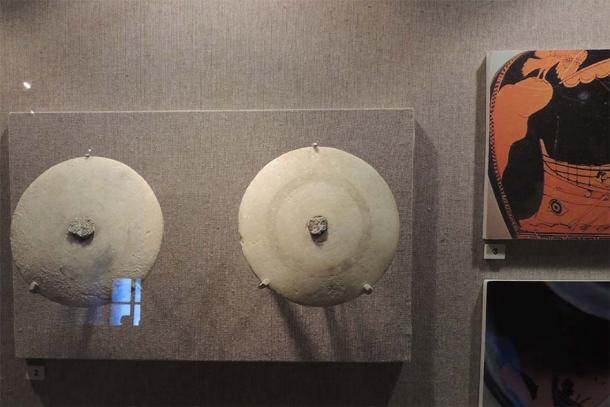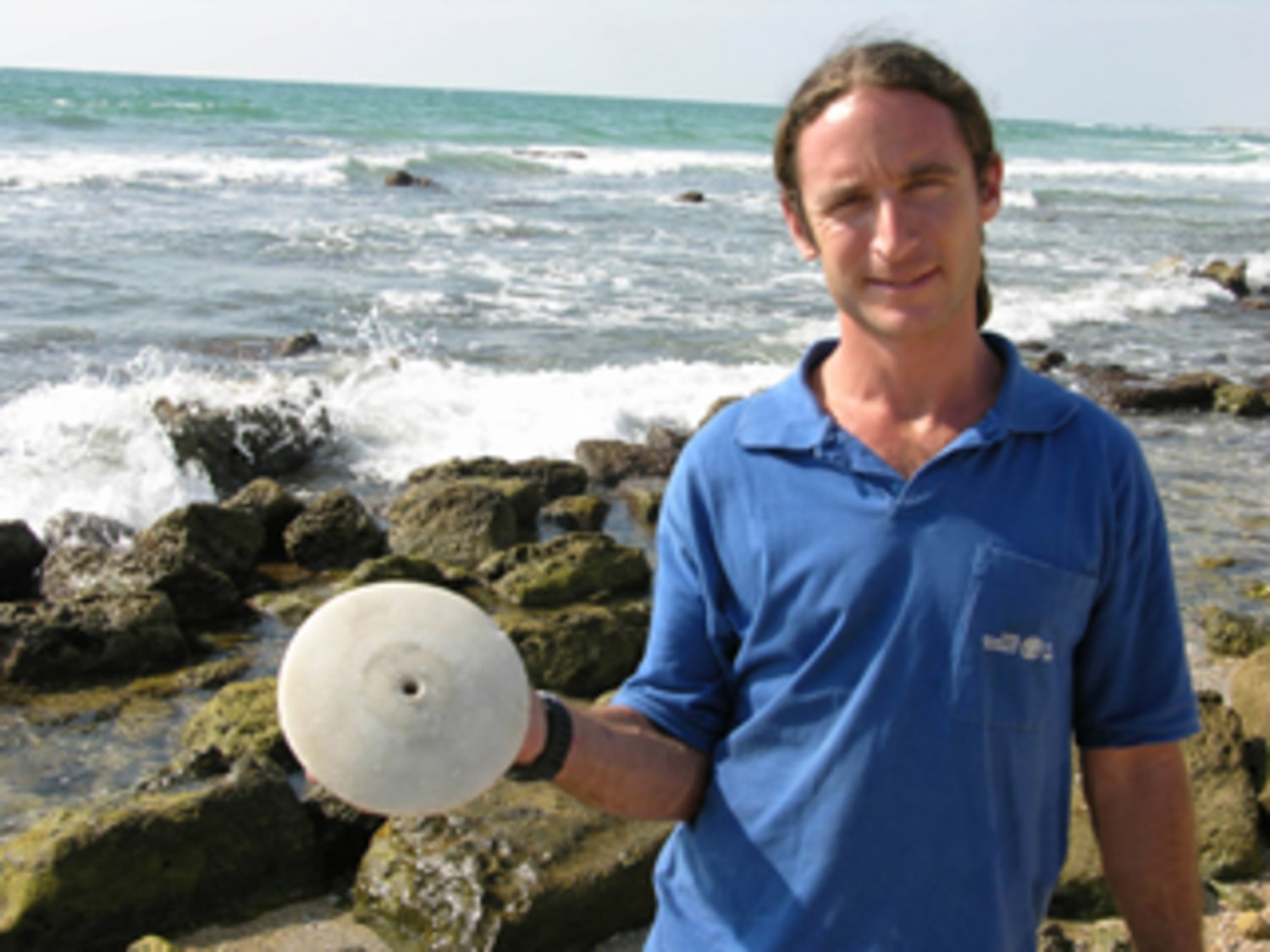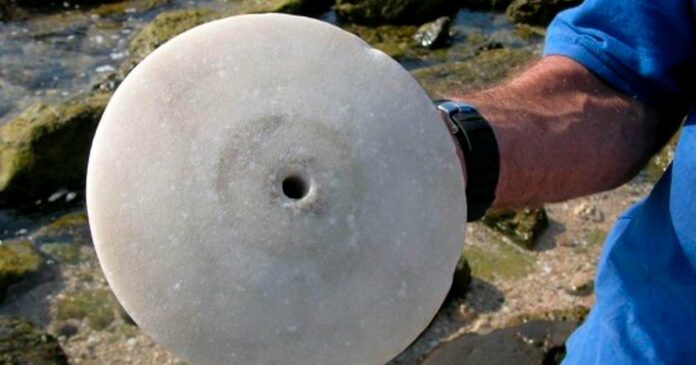In a remarkable stroke of fortune, an Israeli lifeguard has uncovered a rare ancient artifact while swimming in the Mediterranean Sea. David Shalom’s unexpected find—a 2,500-year-old marble disc—provides a fascinating glimpse into ancient maritime practices and superstitions. This discovery not only highlights the rich historical tapestry of the region but also underscores the significance of preserving and studying artifacts that offer valuable insights into the past.
Discovery of the Magic Disc

While enjoying his regular morning swim in the Mediterranean, lifeguard David Shalom noticed something unusual on the seabed. Upon closer inspection, he retrieved a smooth marble disc resembling a small cymbal. Recognizing the potential historical value of the object, Shalom turned it over to the Israel Antiquities Authority (IAA).
The IAA experts were thrilled with the find and quickly identified the disc as a magical talisman. This type of artifact was traditionally used by ancient mariners to protect their ships from malevolent forces, witchcraft, or misfortune.
Historical Significance of the Magic Disc
According to an announcement from the Israel Antiquities Authority on July 18, the marble disc dates back nearly 2,500 years, specifically to the fourth or fifth century BC. Shalom found the disc just offshore from the Yavne-Yam archaeological site, near Palmachim Beach, about 15 miles (24 kilometers) south of Tel Aviv. Yavne-Yam, a bustling ancient port, has yielded numerous artifacts through both land and underwater excavations.
While this particular marble disc cannot be directly linked to any specific shipwreck, it is likely that it came from a sunken vessel that, despite its protective charm, met with a tragic fate.
Unique Features and Historical Context

The sand-colored marble disc measures approximately eight inches (20 centimeters) in diameter. It is perfectly round and flat on one side, with a curved, cymbal-like appearance on the other. A central hole and traces of painted circles around it create an eye motif, a common symbol in ancient maritime talismans.
These discs were typically affixed to the bows of ships with lead or bronze nails through the central hole. Mariners believed these charms would safeguard their vessels from evil spirits and ensure safe passage through treacherous waters.
Rarity and Importance of the Find
Although such magical discs were once common, only a handful have been discovered in the Mediterranean. The find includes two fifth-century BC relics recovered near a sunken merchant vessel off Turkey’s western coast and another near Carmel Beach in Israel. It is suspected that some of these artifacts may have been kept or sold by treasure hunters rather than being turned over to authorities.
David Shalom’s integrity in reporting his find has been praised, as it has allowed the IAA to acquire a rare and significant artifact that enriches our understanding of ancient maritime practices.
The Story of Yavne-Yam

Yavne-Yam was a prominent port for approximately 5,000 years, from the Middle Bronze Age to the Middle Ages. The site’s strategic location, with natural sheltered anchorage, made it a key hub for maritime activity. Archaeological explorations of Yavne-Yam have uncovered a wealth of artifacts from various periods, including anchors, fishing equipment, and pottery.
Notable finds include gold jewelry and statues of the Canaanite-Phoenician god Baal, which span from the Late Bronze Age through the Persian, Hellenistic, Roman, and Byzantine periods. These discoveries illustrate the long-standing significance of Yavne-Yam as a bustling maritime center.
Conclusion
David Shalom’s discovery of the 2,500-year-old magic disc in the Mediterranean Sea is more than just an archaeological find; it is a window into the ancient world’s maritime superstitions and practices. This rare artifact enhances our understanding of how ancient sailors sought to protect their voyages and navigates through treacherous waters. The ongoing exploration and preservation of such finds are vital in piecing together the intricate history of ancient civilizations and their enduring legacies.
